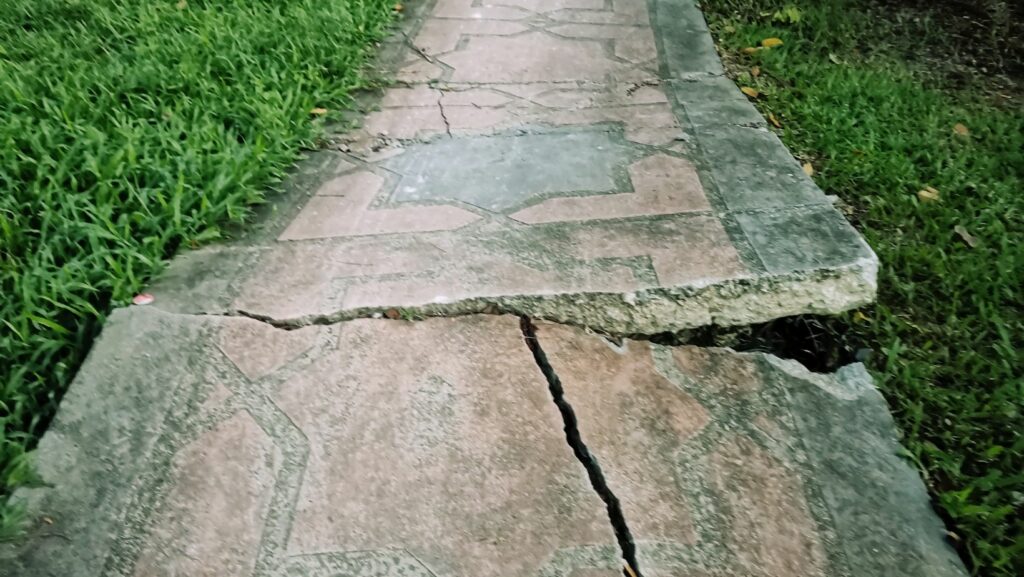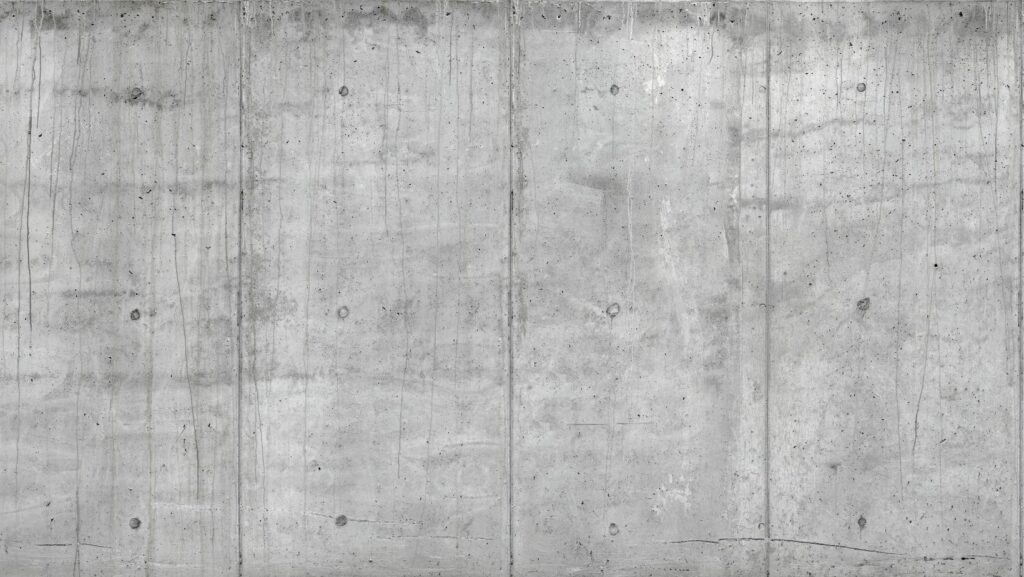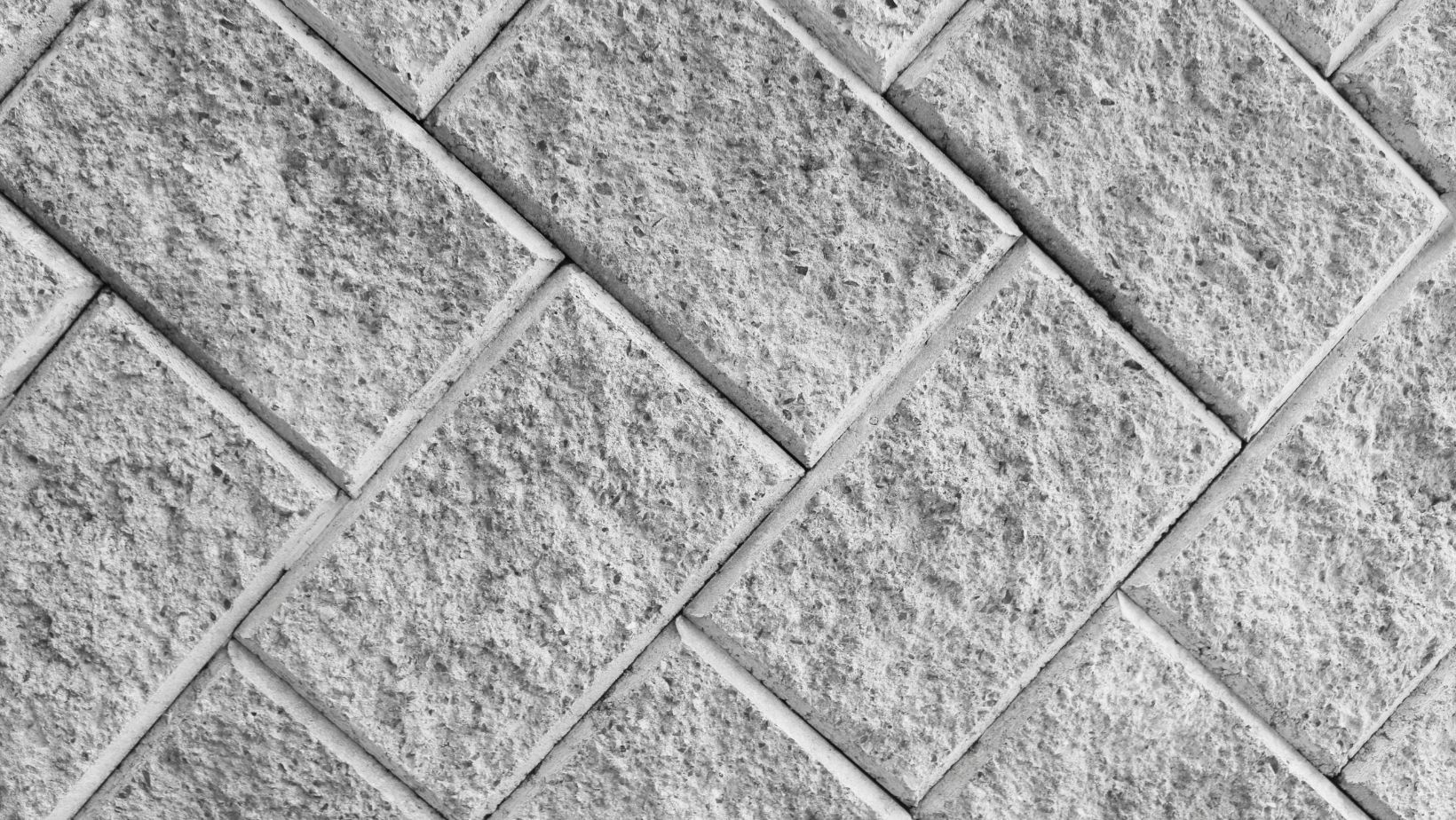If you’ve ever had to deal with a cracked or damaged concrete walkway, you know how frustrating it can be. But don’t despair! With a little elbow grease and some know-how, you can easily repair your concrete walkway and get it looking good as new.
Why Concrete Walkways Crack and Need Repair
Cracks in concrete walkways are usually caused by one or more of the following: tree roots, expansion and contraction of the ground, poor workmanship, faulty materials, or weather.
One of the most common causes of cracks in concrete walkways is tree roots. As trees grow, their roots spread out and expand. This can cause the ground to heave and crack the concrete above. If you have cracks in your concrete walkway that appear to be caused by tree roots, you will need to have the tree removed and the roots taken care of before you can repair the cracks.
Another common cause of cracks is expansion and contraction of the ground. This is especially true in areas that experience freeze/thaw cycles. When water seeps into cracks in concrete and then freezes, it expands and causes the concrete to crack.
Poor workmanship is another common cause of cracks. If your concrete walkway was not properly installed, it is likely to crack over time. Faulty materials can also lead to cracking. If your concrete contains too much sand or if it was mixed with too much water, it will be more susceptible to cracking. Finally, weather can also cause cracking. Extreme heat or cold can damage concrete, as can rain and wind.
Assessing The Damage to Your Concrete Walkway
In order to fix your concrete walkway, you first need to take a close look at the damage and decide whether you can repair it or if you need to replace the entire section. If the damage is isolated to one area, then repairs may be all that is necessary. However, if the damage is widespread or if there are large cracks or chunks missing, then it may be best to replace the entire section.

Choosing The Right Repair Method for Your Concrete Walkway
Different types of concrete repairs are better suited for different types of concrete damage. It’s important to select the right repair method depending on the location and severity of the damage to your concrete walkway.
Concrete repairs can broadly be classified into two categories: surface-level repairs and structural repairs. Surface-level repairs are suitable for cosmetic damage, such as cracks, stains, or pits. Structural repairs are necessary when the concrete walkway has sustained more serious damage, such as large cracks, heaving, or sinking.
The most common surface-level repair methods are resurfacing and patching. Resurfacing involves applying a new layer of concrete over the existing surface. Patching involves repairing damaged sections with new concrete or another material, such as epoxy.
Structural repairs are typically more complex and require more time to complete. The most common structural repair methods are mudjacking and slabjacking. Mudjacking involves pumping a slurry of mud and cement underneath the concrete walkway to raise it back to its original position. Slabjacking is similar to mudjacking, but it uses a lighter slurry that is less likely to cause further damage to the walkway.
Preparing to Repair Your Concrete Walkway
Thoroughly clean the area to be repaired of all loose dirt and debris. If the walkway has cracks wider than 1/4 inch, or if the concrete is significantly spalled (chipped), you will need to remove and replace the damaged sections before proceeding.

Once you have determined the areas that need repair, use a cold chisel and hammer to break away any remaining pieces of concrete. Be sure to wear eye protection when chipping away at the concrete. If the damaged area is small, you may be able to repair it with a concrete patching compound. However, if the damage is large or deep, you will need to fill it with a more substantial material, such as portland cement-based concrete mix.
When using a patching compound or concrete mix, it is important to follow the manufacturer’s instructions regarding mixing and curing times. Once you have repaired the damaged sections of your concrete walkway, allow plenty of time for the repairs to cure completely before walking on them or allowing foot traffic over them.
How to Fix a Concrete Walkway
While cracks in your concrete walkway may not seem like a big deal, they can actually lead to a number of problems. Cracks allow water to seep into the concrete, which can cause the concrete to deteriorate over time. They also provide a perfect place for weeds to grow, which can make your walkway look unsightly. Fortunately, repairing cracks in your concrete walkway is a relatively easy task that you can do yourself.
Here’s what you’ll need to do to fix cracks in your concrete walkway:
- Use a chisel and hammer to remove any loose pieces of concrete from the crack.
- Clean out the crack with a wire brush.
- Fill the crack with concrete repair sealant.
- Smooth out the sealant with a putty knife.
- Allow the sealant to dry for 24 hours before walking on it.
Replacing Damaged Sections of Your Concrete Walkway
Concrete walkways are a common feature in many homes. They provide a safe and level surface to walk on and can add to the aesthetic appeal of your property. Over time, however, concrete walkways can become damaged or cracked, and will need to be repaired or replaced.
Fortunately, repairing or replacing concrete is a relatively easy task that you can do yourself with some basic tools and materials. Here’s what you need to know about replacing damaged sections of your concrete walkway.
Tools and materials needed:
- Chisel
- Hammer
- Trowel
- Level
- Bucket
- Concrete mix
- (optional) Gravel
- (optional) Polyurethane caulk
Instructions
- Use a chisel and hammer to remove the damaged section of concrete. Be sure to break up the concrete into smaller pieces so that it will be easier to remove. You may also want to use a trowel to loosen up any remaining concrete around the edges of the damage.
- Once the damage has been removed, use a level to make sure that the area is level before you begin adding a new concrete mix.
- (Optional) If you are adding gravel to your concrete mix, now is the time to do it. Mixing gravel into your concrete will add strength and durability.
- (Optional) If you are using polyurethane caulk, apply it around the edges of the damage before adding a new concrete mix. This will help create a watertight seal and prevent future damage.
- Add new concrete mix to the area until it is level with the rest of the walkway. Smooth it out with a trowel as you go along. Allow plenty of time for the new concrete to cure before walking on it (at least 24 hours).
Finishing up Your Concrete Walkway Repair
Assuming that the sections you cut out were 6 inches thick, your new concrete walkway will now be 4 inches thick. This is actually the minimum thickness for a concrete sidewalk, so don’t worry, your repair will be just fine.
Now that the repair is complete and the concrete has had time to set up, it’s time to finish the job by filling in the expansion joints and applying a sealer.
Maintaining your Concrete Walkway to Prevent Future Damage
Properly maintained concrete walkways can last for decades, but over time they will inevitably start to show signs of wear and tear. Cracks, chips, and holes are not only unsightly, but they can also pose a serious tripping hazard.
To prevent further damage and ensure a long lifespan for your concrete walkway, it’s important to repair any cracks or chips as soon as they appear. Concrete is a durable material, but it’s not indestructible. With regular use, even the best-made concrete walkways will eventually succumb to the elements.
There are several ways to repair cracks in concrete, but the most effective method will depend on the size and severity of the damage. For small cracks, a simple concrete repair compound is usually sufficient. Just clean out the crack with a wire brush, then fill it in with the compound. Larger cracks may require more extensive repairs, such as drilling pilot holes and inserting dowels to stabilize the area before filling in with concrete.
Chips can be repaired in much the same way as cracks. Again, start by cleaning out the damaged area with a wire brush. If the chip is large or deep, you may need to fill it with a concrete patching compound before sanding smooth. For smaller chips, simply apply some matching paint or sealer and sand until flush with the surrounding surface.
Holes are best repaired with a pre-made concrete patching compound. Just clean out the hole (remove any loose debris or rubble) and apply the patching compound according to the manufacturer’s instructions. Once dry, sand smooth and paint or seal to match the surrounding area.
By taking care of your concrete walkway and performing regular maintenance, you can keep it looking like new for years to come.


